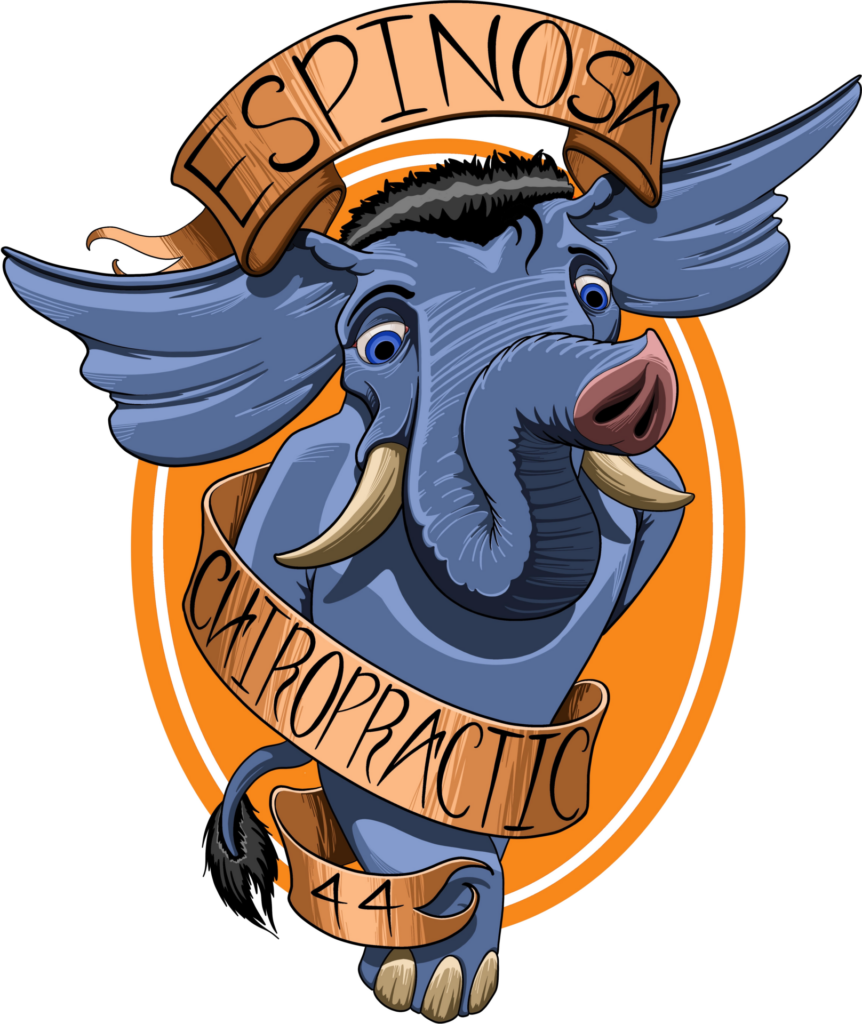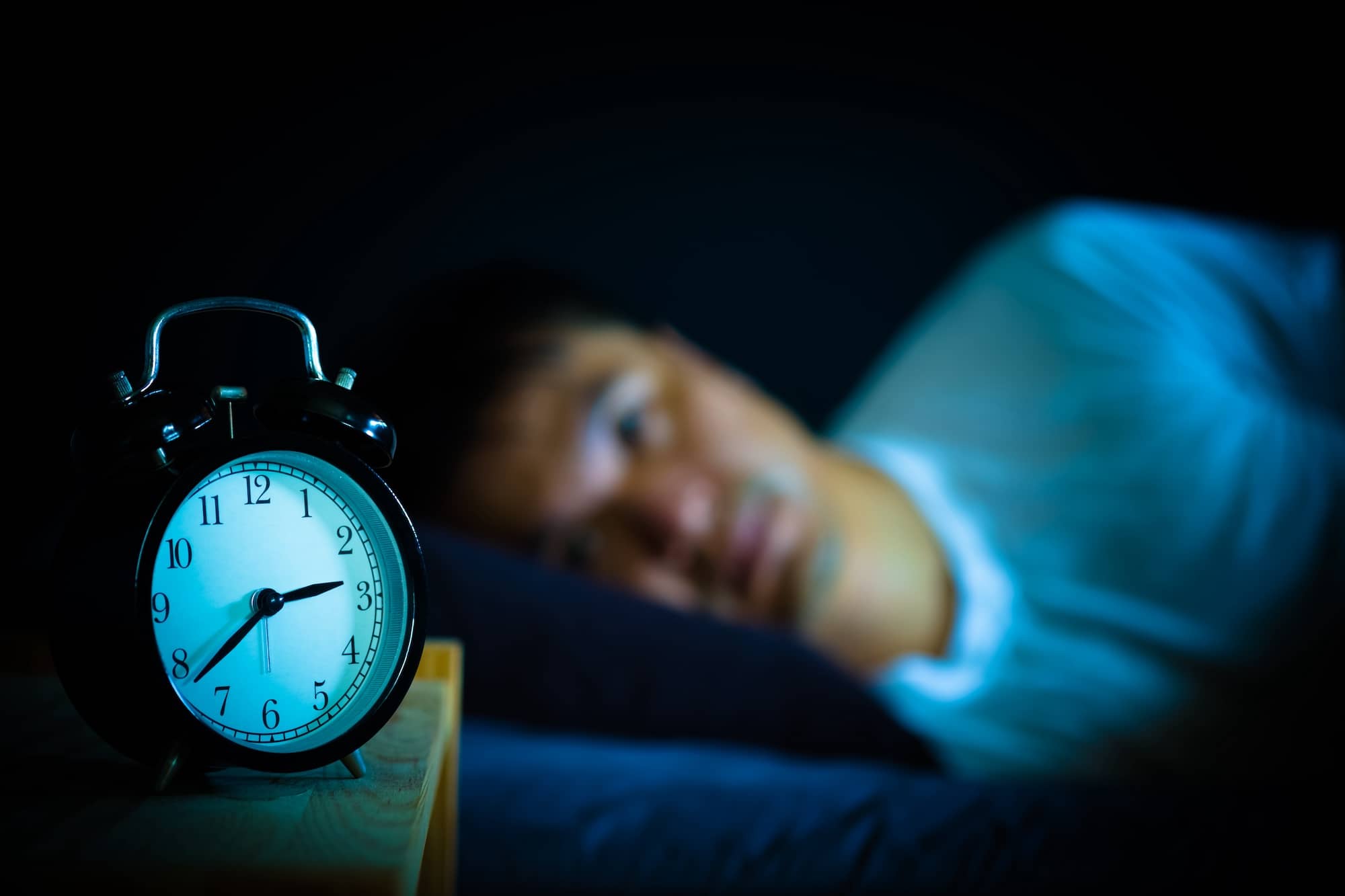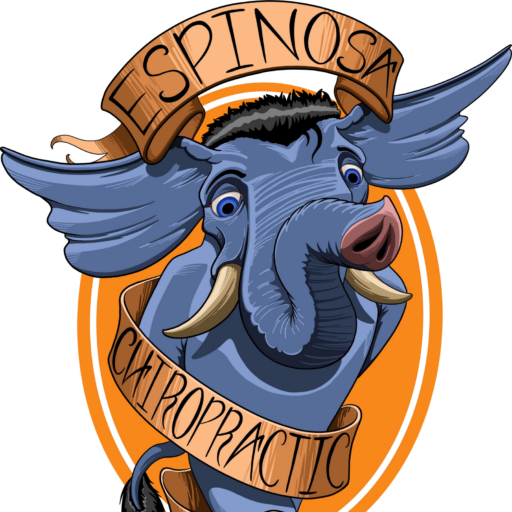Blog
Sleep Quality
Getting a good night’s sleep is essential for overall health and well-being, yet many people struggle with sleep issues. From tossing and turning to waking up with aches and pains, poor sleep can impact your energy, mood, and productivity. One often overlooked solution is spinal alignment, a key focus of chiropractic care. By maintaining a properly aligned spine, you can improve your sleep quality and set a positive tone for the year ahead.
The Spine and Sleep Connection
Your spine plays a crucial role in your body’s overall function, especially when it comes to sleep. The spinal column houses the central nervous system, which controls and coordinates every function in the body, including sleep quality. Misalignments in the spine, known as subluxations, can disrupt the nervous system’s ability to communicate effectively. This interference can lead to discomfort, pain, and even stress—all of which can prevent you from achieving restful sleep.
How Chiropractic Care Helps
Chiropractors specialize in identifying and correcting spinal misalignments through gentle adjustments. Here’s how this can improve your sleep:
- Relieves Pain and Tension: Misalignments can cause muscle tension, joint stiffness, and localized pain. Chiropractic adjustments help alleviate these issues, allowing your body to relax and rest more comfortably.
- Reduces Stress and Anxiety: A misaligned spine can contribute to heightened stress levels. Regular adjustments promote relaxation by restoring balance to the nervous system, helping you fall asleep more easily.
- Improves Circulation: Proper spinal alignment enhances blood flow and reduces pressure on nerves, supporting better oxygen and nutrient delivery throughout the body. This can help regulate sleep cycles and improve overall sleep quality.
- Encourages Healthy Sleep Posture: Many sleep problems stem from poor posture. Chiropractors can provide guidance on optimal sleeping positions and recommend supportive pillows or mattresses tailored to your needs.
Setting a Positive Tone for 2025
By prioritizing spinal health, you’re investing in a foundation for better sleep and overall wellness. Improved sleep quality leads to better energy, focus, and resilience—key factors for achieving your goals in the year ahead. Consider adding regular chiropractic visits to your self-care routine to address underlying issues and keep your spine in optimal condition.
Start the year off right by giving your body the care it deserves. When your spine is aligned, your body can rest, recover, and thrive. Make 2025 the year of better sleep and better health!
Click here to call our Office or call (916) 457-8825
Butt Pain
Butt pain can interfere with your daily life, making it difficult to sit, walk, or perform routine tasks. This discomfort often originates from the lower back, hips, or sciatic nerve, and addressing it requires a targeted approach. Chiropractors specialize in musculoskeletal health and provide effective, non-invasive solutions for managing and eliminating butt pain.
Common Causes of Butt Pain
Several factors can contribute to pain in the gluteal region. One frequent culprit is piriformis syndrome, where the piriformis muscle compresses the sciatic nerve, leading to pain that radiates down the leg. Sciatica, caused by irritation or compression of the sciatic nerve, is another common condition. Other causes include sacroiliac joint dysfunction, lower back issues like herniated discs, and muscle strains from overuse or injury.
How Chiropractic Care Helps
Chiropractors use a holistic approach to identify and treat the root cause of butt pain rather than just addressing symptoms. Through a thorough evaluation, they determine whether your pain stems from misaligned joints, nerve irritation, or muscle dysfunction.
- Spinal Adjustments
Misalignments in the lower back or sacroiliac joints can contribute to butt pain. Chiropractors perform spinal adjustments to restore proper alignment, reduce nerve pressure, and improve joint function. - Soft Tissue Therapy
Chiropractors often incorporate soft tissue techniques, such as myofascial release, to address muscle tension or spasms in the gluteal region. These therapies help reduce pain and improve mobility. - Stretching and Strengthening Exercises
Targeted exercises enhance flexibility and strengthen the muscles supporting the hips and lower back. Chiropractors guide patients through specific routines to address imbalances and prevent future issues. - Posture and Ergonomic Advice
Poor posture or prolonged sitting can exacerbate butt pain. Chiropractors offer personalized advice on posture and workstation ergonomics to minimize strain on the affected areas. - Lifestyle Modifications
For long-term relief, chiropractors may recommend lifestyle adjustments, including proper exercise routines and dietary changes to support musculoskeletal health.
Benefits of Chiropractic Care
Chiropractic care offers a drug-free, non-surgical solution to butt pain. By addressing the underlying cause, it provides lasting relief while improving overall function and mobility. Patients often report significant improvements in their quality of life after consistent treatment.
If butt pain is holding you back, a chiropractor can help you find relief and regain control of your daily activities. Take the first step toward a pain-free life with chiropractic care!
Dr. Espinosa will give you a report of findings from your x-ray to answer all your butt pain questions.
Click here to call our Office or call (916) 457-8825
A Balanced Diet
Maintaining a balanced diet plays a vital role in supporting your overall well-being. However, certain foods can increase inflammation, cause chronic diseases, and harm your health. By limiting or avoiding these items, you can improve your body’s function and feel your best. Here’s what to watch out for:
10 Foods to Avoid for Better Health
1. Cut Out Processed Meats
You expose yourself to high levels of sodium, saturated fats, and harmful preservatives like nitrates when you eat processed meats like bacon, sausage, or deli cuts. Studies link these foods to heart disease and certain cancers.
2. Avoid Sugary Breakfast Cereals
When you start your day with sugary cereals, you set yourself up for blood sugar spikes and crashes. These cereals lack nutrients and increase your risk of type 2 diabetes and obesity.
3. Skip Refined Grains
Eating white bread and pastries floods your body with refined grains stripped of fiber and nutrients. These foods spike blood sugar and contribute to weight gain and inflammation.
4. Say No to Packaged Snacks
Packaged snacks, including chips, crackers, and cookies, pack in unhealthy fats, sugars, and additives. By indulging frequently, you increase inflammation and your risk of chronic disease.
5. Cut Out Sugar-Sweetened Beverages
Sodas and sweetened teas overload your body with sugar and provide no nutritional benefits. Drinking these regularly contributes to weight gain, metabolic disorders, and type 2 diabetes.
6. Skip Fried Foods
Eating fried foods means consuming calorie-dense meals full of unhealthy fats. Frying also produces harmful compounds that elevate your risk of heart disease and certain cancers.
7. Avoid Non-Dairy Coffee Creamers
Non-dairy creamers often include trans fats and added sugars, which harm your heart and promote inflammation. Choose natural creamers to keep your coffee healthy.
8. Pass on Pre-Made Dough and Baked Goods
Pre-made doughs and commercial baked goods sneak in trans fats and sugars that damage your heart and overall health. Making your own ensures healthier options.
9. Ditch Artificial Sweeteners
Studies suggest artificial sweeteners disrupt metabolism and gut health, making you crave more sweets and potentially leading to weight gain.
10. Limit High-Sodium Foods
Canned soups, processed foods, and salty snacks overload your system with sodium, raising your blood pressure and heart disease risk. Opt for low-sodium options instead.
Focus on Whole Foods By swapping out these foods for healthier, whole alternatives, you can reduce inflammation, improve energy levels, and protect yourself from chronic diseases.
Maintain a balanced diet. Your body will thank you for it!
Click here to call our Office or call (916) 457-8825
Brain-to-Body Communication Through the Spine
Your spine plays a vital role in connecting your brain to the rest of your body. This connection powers every movement, sensation, and function you experience. When the spine is properly aligned, signals flow freely between the brain and body, keeping you healthy and energized. Chiropractic care focuses on maintaining this alignment to enhance brain-to-body communication and overall well-being.
The spine houses and protects the spinal cord, which serves as the main pathway for nerve signals. These signals control everything from muscle movement to organ function. When misalignments, also known as subluxations, occur, they can interfere with these messages. This disruption can lead to pain, stiffness, fatigue, and even impaired organ performance. Chiropractic adjustments correct these misalignments, restoring clear communication and helping your body function as it should.
Think of your nervous system as a highway. Misalignments create traffic jams that slow down or block signals. Chiropractic care removes these blockages, allowing signals to travel smoothly. This improved communication helps the body heal itself, reduces inflammation, and promotes better balance and coordination.
Good brain-to-body communication also boosts your immune system. A properly aligned spine allows the nervous system to respond quickly to threats, helping your body fight off illness and recover faster. Many patients report feeling more resilient and less stressed after regular adjustments.
Athletes, office workers, and busy parents alike benefit from optimized spinal health. Whether you’re lifting weights, sitting at a desk, or chasing kids around the yard, proper alignment supports strength, flexibility, and endurance. Chiropractic care keeps your spine in top condition so you can stay active and pain-free.
Stress is another factor that impacts brain-to-body communication. Tension often builds up in the neck and shoulders, putting pressure on nerves. Regular chiropractic adjustments release this tension, improving blood flow and calming the nervous system. As stress decreases, focus and mental clarity improve.
Chiropractic care offers more than pain relief—it provides a foundation for lasting health. By improving brain-to-body communication, adjustments empower your body to function at its best. Start prioritizing your spine’s health today, and experience the difference a well-aligned body can make.
Schedule your appointment now and take the first step toward a healthier, more vibrant you!
Click here to call our Office or call (916) 457-8825
Health Goals for the New Year
It’s the perfect time to set fresh health goals and prioritize your well-being. Whether you want to exercise more, lose weight, or simply feel better in your daily life, chiropractic care can help you succeed. By focusing on improving your body’s function, chiropractic adjustments make movement easier, reduce pain, and help you achieve lasting results.
Many people start the year motivated, but physical discomfort or stiffness can quickly derail even the best intentions. That’s where chiropractic care steps in. Regular adjustments enhance spinal alignment, improve joint mobility, and optimize nervous system function. When your body functions at its best, pain naturally decreases, and energy levels rise. This improvement makes it easier to stick with exercise routines and other healthy habits.
Imagine starting your mornings pain-free, ready to tackle workouts, yoga sessions, or long walks without hesitation. Chiropractic care reduces tension, improves flexibility, and supports proper posture, allowing your body to move fluidly and comfortably. Small changes, like maintaining better posture or stretching consistently, create a foundation for bigger health transformations.
Chiropractic care also helps prevent injuries that can sideline your progress. Misalignments often lead to imbalances that put extra strain on muscles and joints. Regular adjustments correct these issues, keeping your body balanced and resilient. With fewer aches and pains holding you back, it becomes easier to maintain momentum and stay active throughout the year.
Additionally, chiropractic adjustments support mental clarity and stress relief. As your body relaxes, tension fades, and you feel more focused and positive. When your mind and body work together harmoniously, you’re better equipped to set and achieve meaningful health goals.
This year, let chiropractic care be your partner in building a healthier lifestyle. Start with a simple step—schedule an adjustment to assess your current alignment and create a personalized plan for success. As function increases, pain decreases, opening the door to greater possibilities and a more vibrant life.
Don’t let discomfort keep you from reaching your full potential. Embrace the new year with confidence, knowing chiropractic care can help you feel and move better every day. Make this year the one where you achieve your health goals and thrive!
Click here to call our Office or call (916) 457-8825
Immune Systems
Chiropractic Care Builds a Stronger Immune System
Your immune system is your body’s natural defense against illness, and keeping it strong is essential for overall health. While many people focus on diet, exercise, and sleep to support immunity, chiropractic care plays an often-overlooked yet powerful role. Through spinal adjustments and nervous system optimization, chiropractic care directly contributes to a stronger, more resilient immune system.
The Connection Between the Spine and Immunity
The immune system and nervous system are intricately connected. Your nervous system controls every function in your body, including the regulation of your immune response. Misalignments in the spine, known as subluxations, can interfere with nerve signals traveling between your brain and the rest of your body. This interference can lead to reduced immune efficiency and make your body more susceptible to illness.
Chiropractic adjustments restore proper alignment to the spine, removing nerve interference and allowing your immune system to function at its best. By addressing these subluxations, chiropractors help maintain clear communication between the brain and the immune system.
Scientific Support for Chiropractic and Immunity
Research has shown a correlation between chiropractic care and enhanced immune response. One study found that spinal adjustments can increase the production of white blood cells, the body’s first line of defense against infection. Another study revealed that patients receiving regular chiropractic care had a 200% stronger immune response compared to those who did not.
Stress Reduction and Immune Health
Stress is a major factor that weakens the system. Chronic stress elevates cortisol levels, which suppress immune function. Chiropractic care reduces physical stress on the body by improving posture, relieving tension, and addressing pain. These benefits help lower cortisol levels and promote a healthier, more balanced immune response.
Preventative Health with Chiropractic
Chiropractic care is not just about addressing back pain—it’s a proactive approach to overall wellness. By keeping your spine aligned and your nervous system functioning optimally, you support your body’s natural ability to fight off illness. Regular adjustments can make a significant difference in how your body responds to seasonal colds, flu, and other common ailments.
Investing in chiropractic care is investing in your health. By boosting your system naturally, you’re giving your body the tools it needs to stay strong and resilient. Schedule a visit today and discover how chiropractic care can help you feel your best year-round.
Click here to call our Office or call (916) 457-8825
Pain Free Living Is the Best Gift
Living without pain is one of life’s greatest treasures. When your body feels strong and balanced, you’re free to enjoy each day to its fullest. Chiropractic care offers a natural and effective path to pain-free living, making it one of the most valuable gifts you can give yourself or your loved ones.
Chiropractic Care Relieves Pain Naturally
Pain, whether caused by stress, injury, or poor posture, can disrupt your daily routine and limit your quality of life. Many people rely on medications to mask the symptoms, but chiropractic care addresses the root cause. By realigning your spine and relieving pressure on your nerves, chiropractic adjustments restore proper function to your body. This allows pain to decrease naturally, without the need for pharmaceuticals or invasive procedures.
Improved Mobility Means a Better Life
Pain doesn’t just hurt; it restricts your ability to move, work, and play. When your body is free from discomfort, simple activities like playing with your kids, taking long walks, or completing household tasks become enjoyable again. Chiropractic care improves joint mobility, muscle function, and overall flexibility. This ensures that you can keep doing the things you love without worrying about pain holding you back.
Prevent Pain Before It Starts
One of the greatest benefits of chiropractic care is its ability to prevent future issues. Regular adjustments maintain spinal health, reduce inflammation, and prevent the small misalignments that lead to chronic pain. By staying proactive with your care, you can avoid the wear and tear that might otherwise slow you down.
A Thoughtful Gift for Loved Ones
If you’ve experienced the benefits of chiropractic care, consider sharing it with others. Helping a friend or family member find relief from pain could change their life. A consultation or adjustment could be the first step toward their journey to pain-free living.
This season, prioritize what truly matters: your health and happiness. Chiropractic care offers a path to living pain-free, giving you the freedom to embrace every moment without discomfort. Whether for yourself or someone you care about, the gift of a healthy, pain-free body is one that keeps giving. Schedule an appointment today and start experiencing the joy of living without limits!
Click here to call our Office or call (916) 457-8825
Holiday Stress
Holiday Stress and Your Spine: How Chiropractic Care Keeps You Merry and Bright
The holiday season is a time of joy, family gatherings, and festive celebrations—but it can also bring stress and physical strain. Between decorating, shopping, cooking, and travel, your body endures more than usual, and your spine often bears the brunt. Incorporating chiropractic care into your holiday routine can help you manage the season’s challenges while keeping you feeling merry and bright.
Tackling Holiday Stress
Stress during the holidays is nearly unavoidable. Emotional strain, coupled with physical activities like lifting heavy boxes or standing for hours in the kitchen, can leave your spine misaligned and muscles tense. Misalignments, or subluxations, in your spine not only cause discomfort but can also interfere with your nervous system, amplifying stress and fatigue. Chiropractic adjustments help restore alignment, improving your body’s ability to handle stress effectively.
Preventing Holiday Injuries
From hauling decorations out of storage to trudging through crowded malls, holiday activities can lead to unexpected injuries. Improper posture while lifting or overexerting yourself during housework can strain your back and neck. Regular chiropractic visits ensure your spine stays in optimal condition, reducing the risk of injuries and keeping you active through the season.
Boosting Overall Wellness
Chiropractic care is about more than pain relief; it’s about supporting your body’s overall wellness. Adjustments can improve your posture, increase flexibility, and even enhance your immune system. A strong, aligned body is better equipped to fight off seasonal illnesses, helping you stay healthy enough to enjoy every festive moment.
Travel Comfortably
If holiday plans include travel, long hours in cars or planes can wreak havoc on your spine. Chiropractic adjustments before and after trips ensure your body stays balanced and ready for the journey. Stretching techniques and posture tips provided by your chiropractor can make a world of difference in avoiding stiffness and discomfort.
This December, prioritize your spinal health to truly enjoy the magic of the holidays. Chiropractic care offers relief, injury prevention, and improved wellness, allowing you to embrace the season with comfort and joy. Schedule a visit today and let your chiropractor help you stay aligned, stress-free, and ready to celebrate!
Click here to call our Office or call (916) 457-8825
Type 2 Diabetes & Digestive Health
Understanding Type 2 Diabetes and the Role of Digestive Health
Type 2 diabetes is a chronic condition where the body becomes resistant to insulin or doesn’t produce enough of it, leading to high blood sugar levels. This type of diabetes, which accounts for 90-95% of diabetes cases, can develop over time due to factors like poor diet, sedentary lifestyle, and genetics. The consequences of unmanaged type 2 diabetes are significant and can include heart disease, nerve damage, kidney problems, and vision issues.
Managing Type 2 Diabetes Through Diet and Digestive Health
While medications and insulin therapy are often used to manage blood sugar, lifestyle changes play a critical role. Diet, in particular, impacts both blood sugar and digestive health. A well-functioning digestive system supports better blood sugar control and may reduce insulin resistance. High-fiber foods, such as whole grains, legumes, fruits, and vegetables, help slow down sugar absorption, keeping blood sugar levels stable. Fiber also promotes healthy gut bacteria, which are increasingly linked to better glucose regulation and reduced inflammation, both beneficial for people with diabetes.
The Role of Gut Health in Insulin Sensitivity
Research suggests a connection between gut health and insulin sensitivity. The gut microbiome, a diverse community of bacteria in the digestive system, influences how the body metabolizes sugar. A balanced microbiome can improve insulin sensitivity, potentially lowering blood sugar levels and improving diabetes management. Probiotic-rich foods like yogurt, kefir, sauerkraut, and kimchi support a healthy microbiome, and prebiotic foods like garlic, onions, and bananas help beneficial bacteria thrive.
Additional Lifestyle Tips
In addition to diet, regular physical activity and stress management help support healthy blood sugar levels. Exercise increases the body’s sensitivity to insulin, while relaxation practices like meditation reduce stress hormones that can spike blood sugar.
Managing type 2 diabetes involves not only blood sugar control but also a focus on gut health. By prioritizing fiber-rich, whole foods, supporting a balanced microbiome, and adopting healthy lifestyle habits, individuals with type 2 diabetes can improve their digestive health and overall well-being.
Click here to call our Office or call (916) 457-8825
Travel Tips for Thanksgiving
Staying Comfortable with Chiropractic Support:
Thanksgiving is a time for family gatherings, but for many, it also means long hours of travel by car, plane, or train. These journeys can take a toll on your body, especially your spine and joints. Fortunately, chiropractic care can help you stay comfortable and pain-free during your holiday travel.
Travel tips before hitting the road should include scheduling a chiropractic adjustment. A properly aligned spine ensures better posture, reduces tension, and optimizes your body’s ability to handle prolonged sitting. Chiropractors can also recommend stretches and exercises tailored to your specific needs, keeping your muscles relaxed and your joints mobile during the journey.
During travel, it’s essential to maintain good posture to avoid back and neck strain. Use a supportive travel pillow to keep your neck aligned and take breaks to stretch and move around every hour or so. If you’re driving, adjust your seat to support your lower back, and if flying, opt for an aisle seat to have more freedom to stretch. Staying hydrated is equally important, as proper hydration keeps your joints lubricated and your muscles flexible.
Once you arrive at your destination, it’s common to feel stiff or fatigued. Gentle stretches or yoga can help release built-up tension, while a chiropractic adjustment post-travel can address any lingering discomfort. Chiropractic care not only alleviates pain but also enhances circulation and reduces inflammation, helping you recover faster and fully enjoy your Thanksgiving celebrations.
This Thanksgiving, don’t let travel woes ruin your holiday spirit. Use these Travel tips and include chiropractic support into your travel routine, you can arrive at your destination feeling relaxed and ready to embrace the festivities. Chiropractic care offers a proactive way to maintain your health and comfort, making your holiday travel a breeze. Schedule your appointment today and give thanks for a pain-free journey.
Click here to call our Office or call (916) 457-8825



